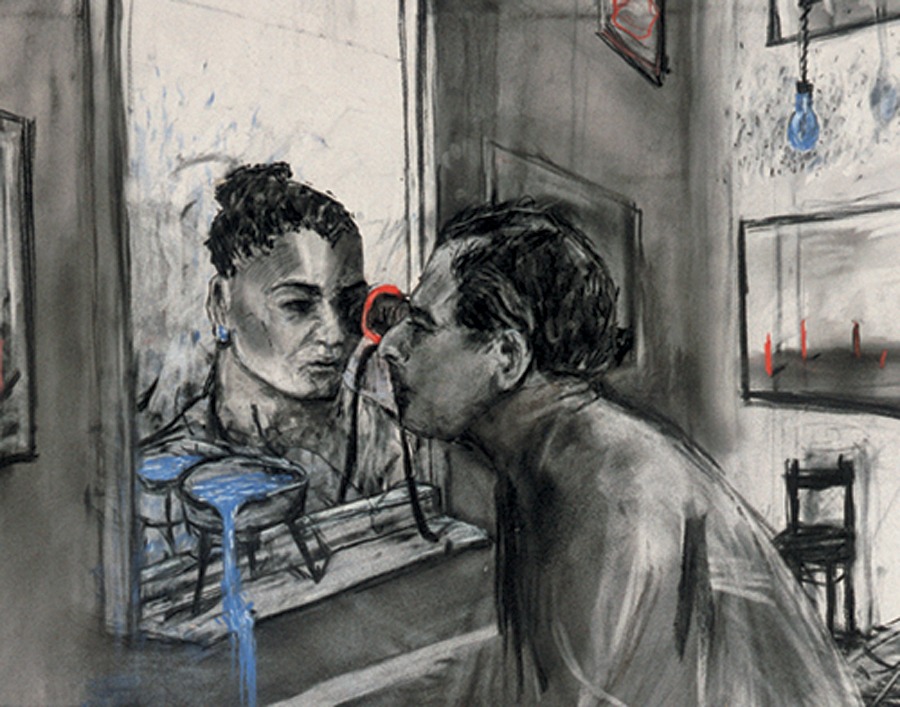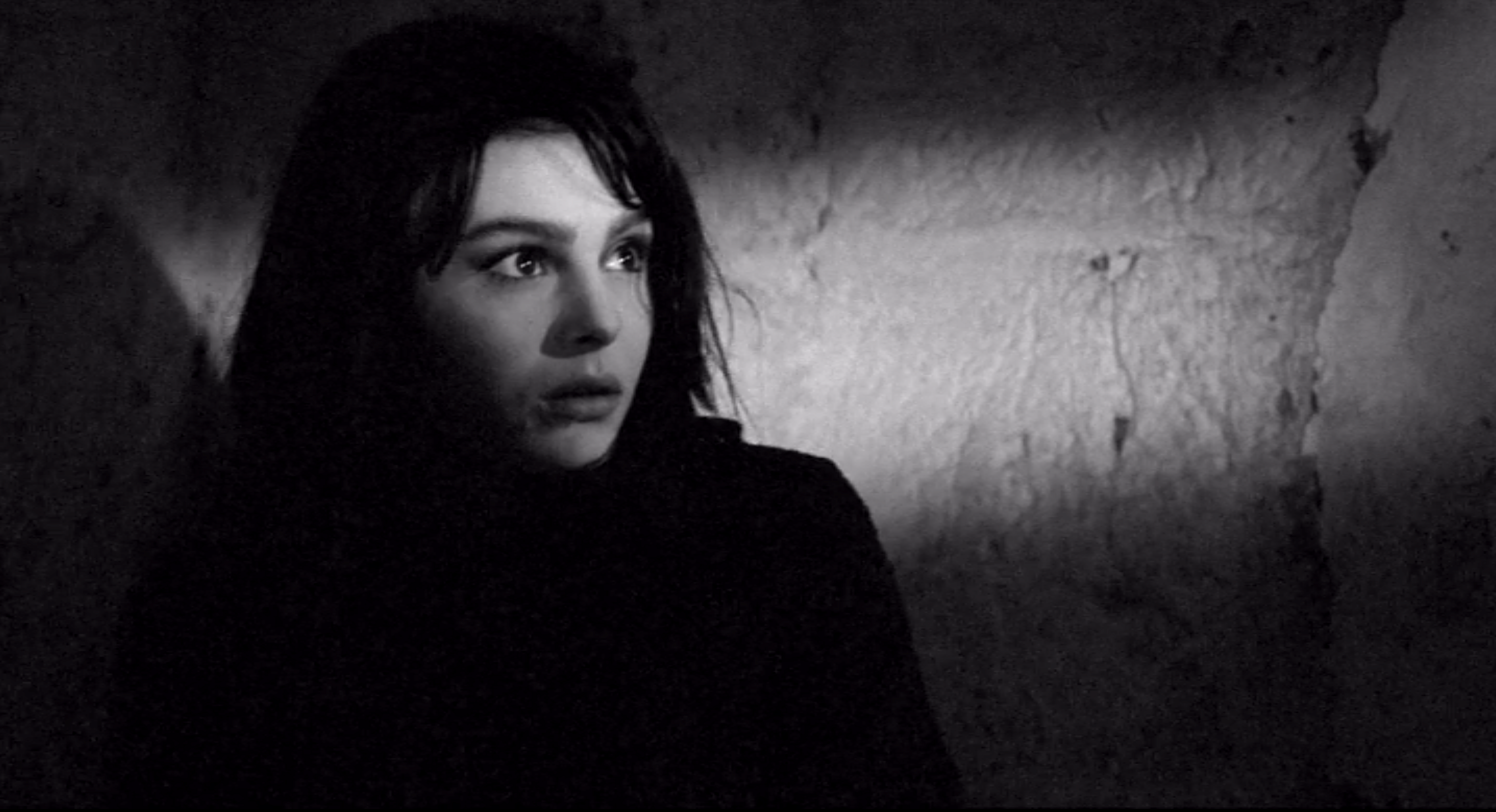
Fed up with giant, money-soaked, CGI cartoons? Bored by Hollywood’s pathetic attempt at feminism? Stupefied by the same old plot? The Philippines has a remedy and her name is Dana! Philipino Komiks created her in the 1950s in an effort to cash in on the success of DC Comics’ Wonder Woman. Darna is a post-colonial, third-world interpretation of a first-world capitalist interpretation of a progressive psychologist’s attempt to bring feminism and BDSM to the world of superheroes. A rich provenance to be sure.

Darna began as a comic book character and then, just as Wonder Woman did in America, Darna became a television show and then a prodigious movie franchise. The creator of the original Wonder Woman was a psychologist named William Marston. He explained his inspiration and intentions like this,
“Not even girls want to be girls so long as our feminine archetype lacks force, strength, and power. Not wanting to be girls, they don’t want to be tender, submissive, peace-loving as good women are. Women’s strong qualities have become despised because of their weakness. The obvious remedy is to create a feminine character with all the strength of Superman plus all the allure of a good and beautiful woman.”
That first sentence is a biting and insightful observation, but then the rest of the quote gets a little confusing. The equating of goodness with beauty seems a bit fascist in a eugenics sort of way, but Marston was a strange fellow. He also seemed to feel that BDSM was a cure for what ails society. I suppose Michelle Foucault might agree, but it’s not the first thing you think of when seeking a panacea. Here Marston explains his idea,
“The only hope for peace is to teach people who are full of pep and unbound force to enjoy being bound… Only when the control of self by others is more pleasant than the unbound assertion of self in human relationships can we hope for a stable, peaceful human society… Giving to others, being controlled by them, submitting to other people cannot possibly be enjoyable without a strong erotic element.”
I doubt any of this was on the minds of Mars Ravelo or Nestor Redondo, the Filipino men who coopted Wonder Woman’s image for Philipino Komiks in 1950. They saw an opportunity to make money and they were right. Darna is still an ongoing phenomenon 70 years later. Along with the 14 movies, several different television series, and comic books, there have been two ballets written about Darna, a series of national postage stamps, a card game, and she has appeared in commercials too.

Like all good superheroes, Darna has an alter-ego she uses as a disguise. No one would suspect that Narda, the mild-mannered newspaper reporter, is actually Darna the proud savior of the Philippines! Darna only has to swallow a magical white pebble to transform into her super-self. The pebble was given to her by a space alien, angel thingy with glowing wings. Narda/Darna lives at home with her grandmother and two younger brothers Ding and Dong. I’m thinking both the boys get teased in school for their names but for very different reasons and in very different ways.
It’s not difficult to find Darna movies, but it is difficult to find them with English subtitles. I have managed to unearth three, all of which have their own unique appeal.
Darna v.s. The Planet Women

Darna v.s. The Planet Women was the ninth movie in the series and was made in 1975, not to be confused with the later movie, Darna and The Planetmen (note the important change of the conjunction).
Of course, if you think about it, all women are planet women but the ones in this movie are evil, alien, planet women in very tight short shorts. These women have been brought to earth by Mistress Electra to kidnap the planet. They want to drag the whole kit and caboodle back to their galaxy!
These vile villainesses come in a full spectrum of colors. There is the blue one, the brown one, the red one, and the white one, all of whom seem seriously dedicated to their mission but the yellow one is all flirty and wiggly. I think she may have her own special mission in mind.
The alien ladies fly around in what looks like a flying saucer on the outside and a mechanical birthday cake on the inside. The film isn’t much more than a curvy super babe in a bikini battling a bunch of foxy babes in full body-colored makeup for an hour and a half, but what more could you want? You even get a heavy-handed and very strange moral in the end. Maybe it’s more a prescription than a moral but the idea is that a good and strong nation needs Jesus and nuclear weaponry, and lots of go-go boots, lots and lots of go-go boots. I’m not sure how anyone could disagree with that.

Darna
This aptly named film was made in 1991. It won Best Film that year at the Metro Manila Film Festival. I’m not sure what that says about the festival, or about the Philippine movie industry but if Darna was the best film that year I would be very hesitant to watch whatever came in second.
Darna is considerably different from Darna v.s. The Planet Women. Darna is a more ambitious attempt to not only provide a Darna adventure but to provide origin stories for her and for the main antagonists that she repeatedly faces throughout the comic book and television series. Tim Burton’s version of Batman came out in 1989 and surely helped to inspire Ravelo and Rodriguez to focus on origin stories.
In Darna, our titular heroine faces off against Dominico Lipolico, Valentina the snake demon, and Purita the batwoman. The film would be relatively predictable if it didn’t include random flourishes that make you tilt your head like a confused puppy. It makes sense that Valentina has snakes for hair like Medusa, but she also has a talking, rubber, sock-puppet snake named Vibora. Valentina keeps Vibora in her purse and the puppet pops out every so often to offer comedic relief. She has big scarlet lips and giant eyelashes. I’m unfamiliar with the snakes of the Philippines but I’m thinking she might give David Attenborough pause. Mostly she is horny and supplies a flurry of lewd comments about people.
Purita is a human-sized bat that flies around and bites people. Again this is not a surprising model for a villain, but her wings are brown and furry and do not move when she flies. She doesn’t speak either, she just moans and growls.
Both “women” are controlled by Dominico Lipolico, a satanic plutocrat bent on world domination. He’s a pretty straightforward villain who snaps his fingers at his minions and keeps his hair very carefully quaffed.
The plot is standard fare if you can keep the characters straight, which is very difficult. The movie assumes you are already familiar with all the players. Along with the principles, there is also the completely insane chief of police who, like the others, seems predictable until during a raid he bursts into the criminal headquarters, begins spraying bullets everywhere with his machine gun, and yells “Merry Christmas!” It’s unexpected and inexplicable flourishes like this that make the movie worthwhile. You just won’t see Gal Godot wearing a sock-puppet or yelling out random holidays as she deals out death.

Darna Returns
In Darna Returns made in 1994 Darna is played by Anjanette Abayari. Partly due to the dramatic nature of Ms. Abayari’s proportions and partly due to a carefully trimmed outfit and some strong underwire, Darna’s image in this film ends up quite a bit more sexual. The goofy green screen shots of her pretending to fly suddenly swell with newfound interest as she zips by at all angles.

It appears that Darna Returns had a bigger budget. Darna gets to wrestle a helicopter, to the ground in this one. I’m not sure how she would get any leverage. The whole flying thing is a mystery to me. Does it take muscle strength? Does it count as cardio? Is there a flying setting on Fitbit?
Valentina the snake lady is in this film too. The creepy, rubber, sock puppet is gone but it has been replaced with a different creepy, rubber, sock puppet. This time it’s Valentina’s decaying and half-rotted mother who Valentina wants to revitalize by stealing Darna’s super-stone.

There are actually quite a few transformations in Darna Returns. Valentina and her assistant can both turn into a variety of snake-related apparitions.

Even with all the transformations, fistfights, and generous amounts of yellow goo, not much actually happens in Darna Returns. It just repeats itself. Valentina steals the stone from Darna, then Darna steels it back and the Valentina gets it again and after 50 minutes you’ve lost interest. Maybe if they had upped the ante with a second creepy, rubber sock-puppet it would have kept my attention.
There is a subtext that may or may not be intentional. Darna Returns centers around the dangers of indoctrination and religion. Valentina is trying to convert everyone to a fake religion that will ultimately bring the Philippines to its knees.
The Philippines is a very religious country. It was invaded and colonized by Spanish Catholics in 1521. As a result, more than 80% of the current population are still unable to throw off the religion of their oppressors and so continue to identify as Catholic. Of the remaining 20%, more than half are Protestant. With the country completely under the fist of Christianity, it is doubtful that Darna Returns is an intentional criticism Christianity’s role in imperialism. However, the fact remains that the pernicious nature of invasive ideologies is definitely brought up and even challenged in the film.
Valentina’s cult-like religion illustrates the dangers of blind obedience to a prophet. She fashions herself as a cross between a televangelist and snake-wielding shaman. As a shaman, she could be seen as embodying the indigenous pagan religions of The Philippines that must be expunged by Christianity. As a preacher, she could be seen as a charlatan who appears on television to convert hundreds of people into mindless followers.
She could also be seen as leading people away from tradition and toward the false religion of Christianity, but had that been the intention, the film would surely have been censored. Intentional or not, religion as a mode of belief is definitely called into question in the film, and there is no emergence of a true religion to replace it.

I was only able to locate three films so my sample size is small but I prefer the earlier Darna to the more recent one. The earlier depictions were more stylized, more like a comic book. The later ones are a little more conventional. They are a little closer to the American movies they are imitating. I’ve seen both of the Gal Godot’s Wonder Woman movies. I grew up on Linda Carter’s depiction of Wonder Woman on television, and I watched the cartoon Wonder Woman on Saturday mornings when she joined The Super Friends. Even as an 8-year old I thought using a white line to represent her invisible plane was dorky. Hannah Barbara cut a lot of corners in their cartoons, especially in the foley department. They had a set of 10 or so sound effects that they used over and over again in all their cartoons.

None of these American depictions of Wonder Woman hold my interest as well as Darna. It’s the sock puppets and Medusa wigs and the the Tagalog dialogue randomly switching to Spanish or English that make her films entertaining. The Philippines suffered occupation by The British, The Spanish, and The Americans. Each invader left their mark on Philippine culture. Darna is just one result of this violent culture clash.
The films may be low-budget rip-offs of an American invention but they emerge from a rich mixture of disparate traditions and ideas. America has its own mixture of cultures but over time it has been homogenized and tamed into something smooth and inoffensive. The new American Wonder Woman movies are bland vehicles for a lowest common denominator spectacle. The awkward badly made Darna films still evidence the turbulence of the cultural stew that produced it.

In lieu of an epilogue, I am including three reproductions of paintings made by a Filipino artist named Manuel Ocampo. He was born in 1965 and is alive and working today. His paintings graphically illustrate these post-colonial clashes that still reverberate throughout the island.

If you enjoyed this article click here for more



